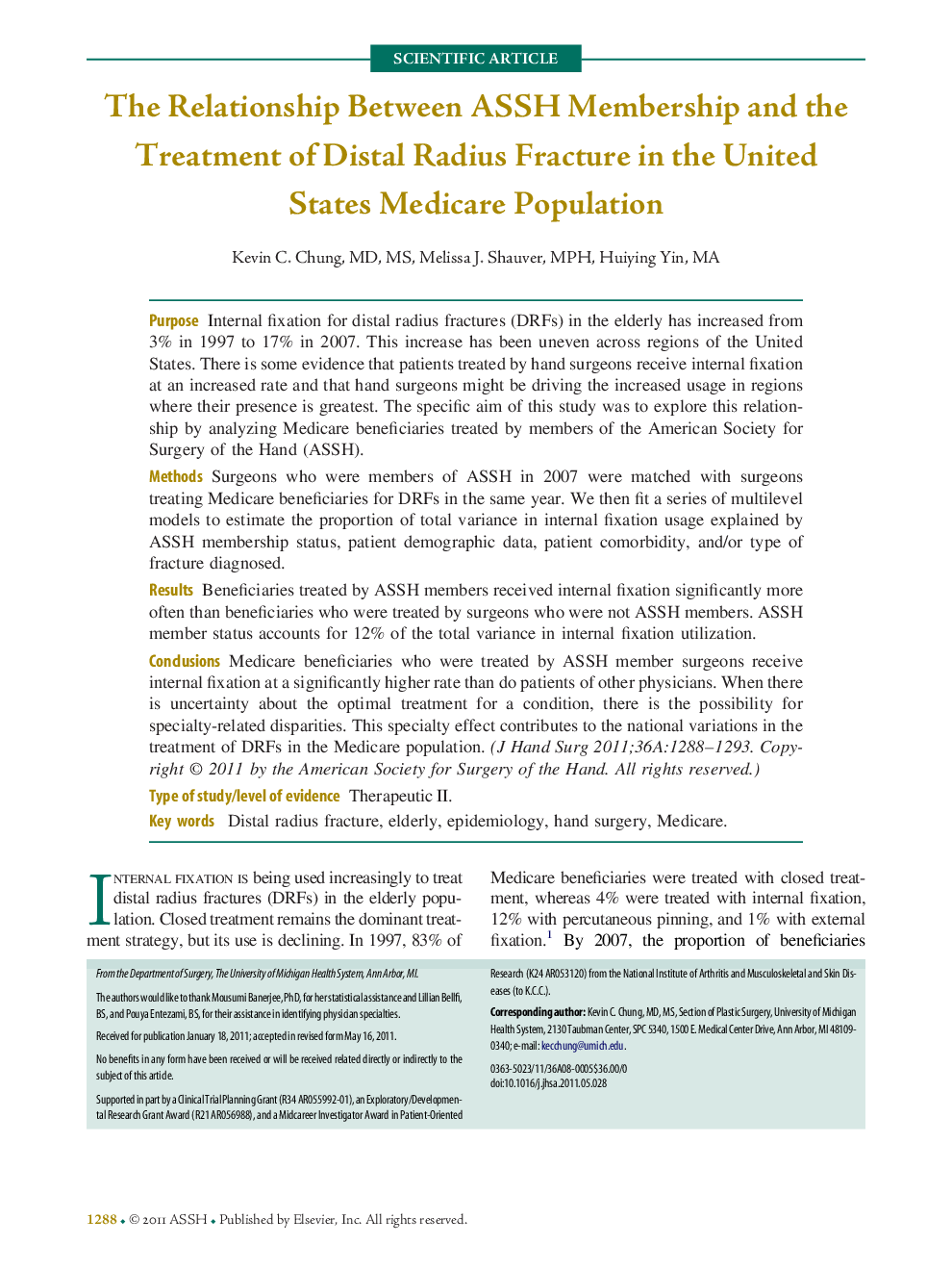| کد مقاله | کد نشریه | سال انتشار | مقاله انگلیسی | نسخه تمام متن |
|---|---|---|---|---|
| 4066934 | 1604405 | 2011 | 6 صفحه PDF | دانلود رایگان |

PurposeInternal fixation for distal radius fractures (DRFs) in the elderly has increased from 3% in 1997 to 17% in 2007. This increase has been uneven across regions of the United States. There is some evidence that patients treated by hand surgeons receive internal fixation at an increased rate and that hand surgeons might be driving the increased usage in regions where their presence is greatest. The specific aim of this study was to explore this relationship by analyzing Medicare beneficiaries treated by members of the American Society for Surgery of the Hand (ASSH).MethodsSurgeons who were members of ASSH in 2007 were matched with surgeons treating Medicare beneficiaries for DRFs in the same year. We then fit a series of multilevel models to estimate the proportion of total variance in internal fixation usage explained by ASSH membership status, patient demographic data, patient comorbidity, and/or type of fracture diagnosed.ResultsBeneficiaries treated by ASSH members received internal fixation significantly more often than beneficiaries who were treated by surgeons who were not ASSH members. ASSH member status accounts for 12% of the total variance in internal fixation utilization.ConclusionsMedicare beneficiaries who were treated by ASSH member surgeons receive internal fixation at a significantly higher rate than do patients of other physicians. When there is uncertainty about the optimal treatment for a condition, there is the possibility for specialty-related disparities. This specialty effect contributes to the national variations in the treatment of DRFs in the Medicare population.Type of study/level of evidenceTherapeutic II.
Journal: The Journal of Hand Surgery - Volume 36, Issue 8, August 2011, Pages 1288–1293